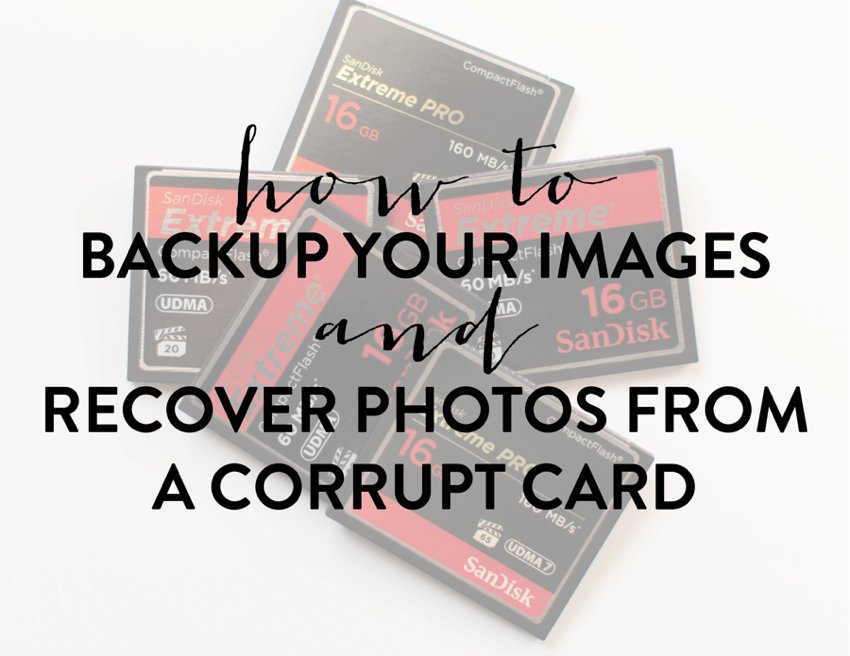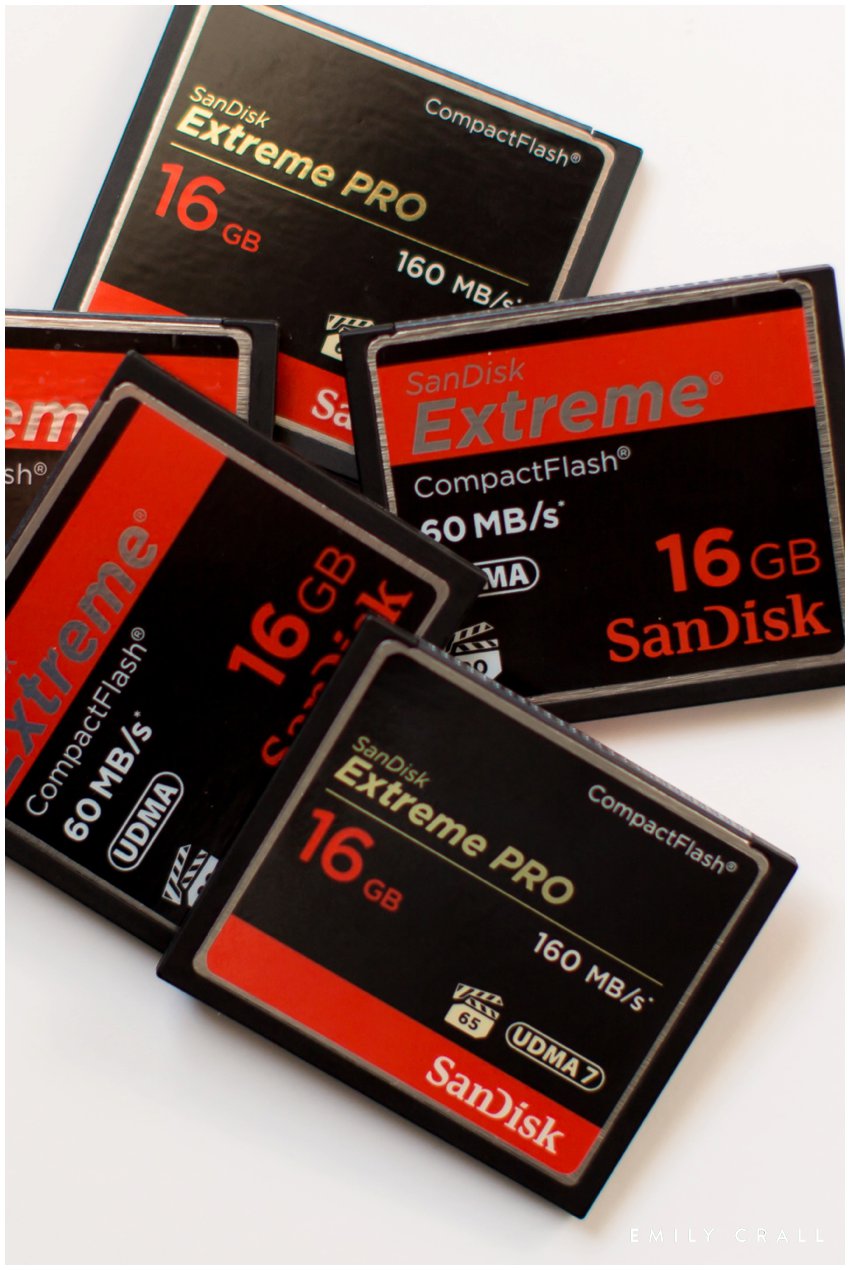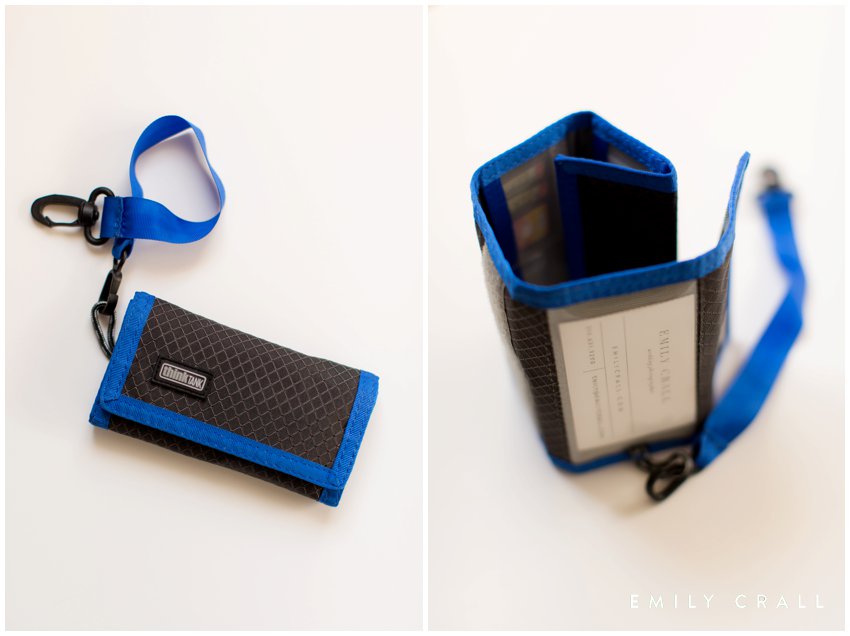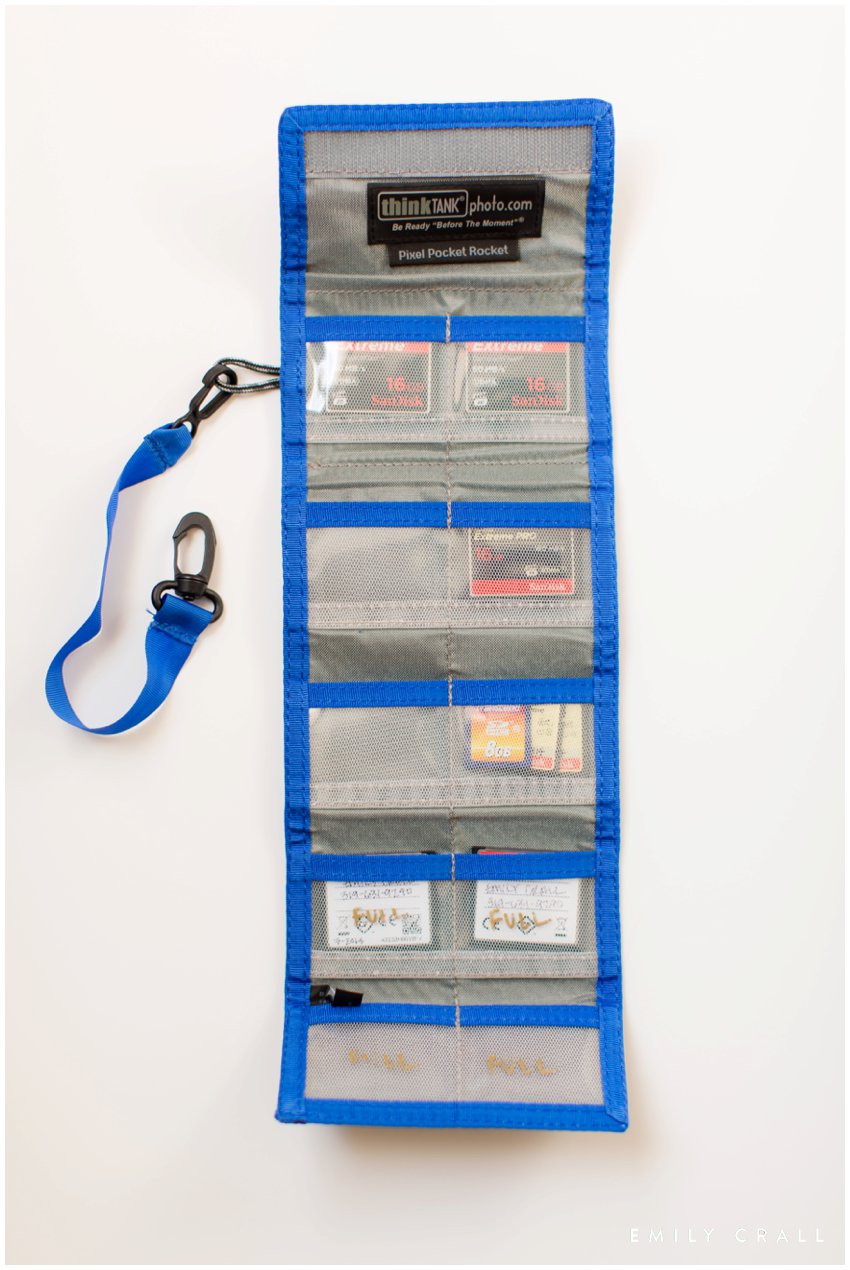
This was my fifth season of wedding photography. I had always heard other photographers talking about corrupt memory cards, file recovery, and backing up photos, but I somehow thought I was above that. That would never happen to me because it had never happened before. It was the worst reasoning and terribly irresponsible of me to think that way. Something was bound to happen some day.
So here I was, in my fifth season of weddings, and I grabbed an empty, freshly formatted memory card for bridal party photos. I shot the entire bridal party, family photos, and ceremony on this one card (another mistake I’ll talk more about in a minute). At the reception, I pulled a few images from the card for the same-day slideshow and didn’t think any more of it.
Back at home, I start to upload all of the cards onto my computer and that card–the one that had a huge chunk of the day on it–wouldn’t work. Every time I plugged it in, an error message came up saying, “the disk you inserted was not readable by this computer”. I tried putting the card back into the camera, but I’d get a similar message on my camera screen.
You can imagine how sick I became. Absolutely ill. My mind went to the worst places possible and I could feel a legitimate panic attack coming on, complete with dizziness, fainting, and chills.
This story has a happy ending. At the advice of some of my photography friends, I downloaded a recovery system called Photo Rescue. On the first try, it recovered old images from previous weddings that I had formatted over (cue another panic attack), but on the second, advanced try, it recovered every single raw file I had taken from the wedding.
What happened to me changed the way I work with images and cards.
1. Backup as you shoot.
I shoot with a Canon 5D Mark III which has the capability to shoot duplicate files. I hadn’t ever taken the time to figure this out before my near-catastrophe, but I’m an avid believer in this now. I shoot all my raw files to 16GB SanDisk CF cards and have the camera set to put a duplicate jpg copy onto a 16GB SanDisk SD card. This means that if in the future one of my CF cards corrupts, I still have an SD card as a backup with the jpg files.
2. Use trust-worthy cards.
The card that corrupted on me was not the brand I usually use or the brand that I have been buying in the last year or two. And while things can still go wrong with any brand of card, it truly is worth the investment to purchase from a company you trust. I now shoot only with SanDisk cards. Here is a great article from Zach & Jody Gray about SanDisk and other card issues called, “Why your CF card might fail at your next shoot“.

3. Replace your memory cards.
Memory cards are one of those annoying things to replace. Nothing is wrong with the ones you are using and so it often seems like a waste of money to spend hundreds of dollars on a new set of memory cards. But think about how much you use them and what kinds of irreplaceable, valuable imagery they are recording. Work it into your cost of doing business and replace your memory cards every year. I like to replace mine in the winter since that’s when I do a clean sweep of my inventory and equipment. As a bonus, there are often great sales on Cyber Monday which makes it a great time to stock up.
4. Don’t put all your eggs in one basket.
I know every photographer does this a little differently, but my go-to card size is 16GB. Some photographers I know shoot on 64GB and some swear by 8GB, but 16GB is perfect for me and I won’t go any larger than that. If a card corrupts or gets lost or is stolen by ninjas, I want to be able to still have a large amount of the wedding or shoot saved on other cards. In the situation that happened to me above, I was shooting on a 32GB which had allowed me to shoot hours of the day on that one card without running out of space. When I thought I had lost all of those images, it was devastating to think of just how many important images there had been on that card. Change cards often. If you can’t remember to change cards, get smaller sized cards so that you literally HAVE to stop shooting and get a new memory card.
5. Format your cards prior to each shoot.
This is a personal rule of mine. I have it worked into my checklist so that before each wedding, I format all of the cards. Formatting is kind of like restarting a computer–“have you turned it off and back on again?”–it refreshes the card and gives you a clean slate. (Always make sure you’ve saved the files to your computer before formatting over those files!)
6. Keep your cards safe.
There are lots of option for carrying your cards. My favorite is this Think Tank pocket holder. If you have your cards all willy-nilly in your camera bag in their plastic retailer cases, you need to think about switching to something more organized. I even labeled the inside of my case so that I knew where the full cards and empty cards are so there is no confusion as well as turning the full cards backwards in the case and the empty cards facing forward. Word to the wise, keep your cards on you if possible. If your camera bag gets stolen, you don’t want to lose your memory cards with it. Insurance can help replace your equipment, but it can’t replace those images.


7. Upload your images to more than one drive.
When transferring images from the cards to my computer, I have the files saved to two separate hard drives. (Photo Mechanic makes this super easy to do during importing.) If one hard drive would crash, I have the raw files saved to another one and nothing is lost.
8. Edit your files quickly and store safely off location.
Not only do I like to have a quick turn-around time for my editing because I want my clients to enjoy their images and because I don’t like to sit around on unfinished work. I actually also do this because as soon as I’ve edited the photos, I upload them to PASS, my online gallery sharing system, and those final, curated, edited images are now safe in yet another place, this time outside of my home. If a disaster would strike my physical house, I’ve got all my clients images saved in cloud-based storage. It’s yet another level of protection.
9. If your card corrupts, find a reputable program, company, or system to try to rescue the images.
Like I said, I used Photo Rescue. It was an online download so I didn’t have to wait for the mail to come (and several more sleepless nights). The initial download is free and then if it finds the images you are looking for, it’s $29 to save those images to your computer. Small change for what I was willing to pay in the moment… One of the first things that it told me to do was NOT to keep trying to get the card to read. The more you do that, the worse it can corrupt. It actually read the card once and then worked from that initial reading to find the images so that it didn’t overwork the corrupt card.
Also, if the first reading doesn’t bring your images up, don’t panic! Try the advanced reading. That was the one that ended up finding all of my missing files.
Other suggestions were: Card Rescue and SanDisk Rescue Pro
10. If you think it won’t happen to you, it will.
Never count yourself luckier than you are. Technology fails us once in a while. Put measures in place so that you are backed up and prepared when it does.
add a comment
+ COMMENTS